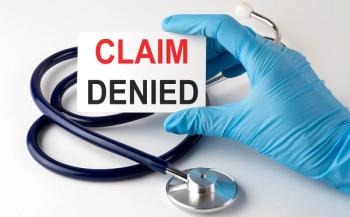
Care guidance programs can boost chronic care management efforts
Care guidance builds stronger connections with patients and drives better health outcomes
Addressing the whole spectrum of a patient’s condition
There is growing recognition of the struggles
Nearly
Care guidance solution
Many health care provider organizations are finding value in employing patient advocates and navigators whose scope is focused on proactively activating CCM patients and identifying and resolving their disparities - before they become clinically problematic and costly. However, nearly all organizations that have tried to leverage “lay” personnel to support and extend the clinical team have found that success care navigation programs require careful thought about roles and responsibilities, additional technology investments to support scalable and repeatable non-clinical workflows and specialized training and supervision for these extender resources.
A well-designed care guidance program extends the capabilities of a clinical team and advanced the priory and goals of improving quality and advancing
Evidence
A
According to a
How care guidance works
The addition of a care guidance program, beyond legacy navigation, provides health care organizations with truly effective support service by freeing up labor, time, and resources so that clinical staff can focus on high-value tasks within their scope.
The success of a care guidance program rests largely on specially selected and tech-enabled “care guides” who work to establish a peer-to-patient connection with patients and their families. This human-led approach builds trust, enhances a patient’s ability to communicate and helps to uncover issues that pose barriers to care. The support of care guides then works to resolve these issues and assist patients in the ongoing process of their care.
Optimally, care guides are equipped with scalable, technology platforms that provide structured workflows and use evidence-based disease and condition-specific protocols to proactively identify and resolve practical and non-clinical barriers experienced during their care. With this technology support, care guides ensure that non-clinical issues get promptly resolved, and clinical issues are immediately escalated to proper clinical care teams.
The human element of care guidance is important as automated technology cannot be a replacement for the human aspect of patient interaction. This is especially true considering the limited abilities certain populations have in accessing digital health technologies and potential use impairments among disabled, disadvantaged, and senior populations. The right mix of human and tech elements, integrated together, support personalized and meaningful peer-to-patient relationships and personalized communication in providing patients and their families with the connected support they need to stay on track and engage in the management of their condition throughout their care continuum.
Capture strategic insights
An effective care guidance platform captures SDoH data and disparity-related barrier resolutions that help operational improvement and supplement electronic health records systems, some of which are not specifically designed to facilitate the kind of workflows that are needed when addressing health equity and social determinant issues.
Upon intake, care guides personally conduct an assessment to identify and address and the patient’s social needs and concerns. Data from these screenings provide key insights to identify probable SDoH risks. Led by this intelligence, care guides proactively and promptly resolve non-clinical issues. In an integrated care guidance delivery system, clinical issues are promptly escalated and automatically messaged to clinical teams.
New revenue opportunities
Since the introduction of reimbursement for CCM, the Centers for Medicare & Medicaid Services has consistently increased payments rates to advance this important aspect of connected care for patients experiencing multiple complex conditions.
CCM programs have the ability to garner additional revenue streams.
Care guidance programs support a range of additional care management models, including:
- Principal Care Management (PCM)
- Annual Wellness Visit (AWV)
- Remote Patient Management (RPM)
- Total Care Management (TCM)
A growing number of providers are electing to participate in arrangements that link payments to measured health equity improvements and overall quality performance indicators. A CMS initiative that is helping advance health equity is the introduction of the
For providers that are exploring options to participate in these programs with the support of care guidance to supplement clinical protocols with social determinants efforts, there are a number of choices. No matter which program a provider is considering, the common element is the need to better identify, document and resolve barriers embedded in SDoH and drivers of disparities, and advance health equity for all patient populations.
Value of a care guidance partnership
Care guidance is becoming a “must-have” addition to the service line portfolio of health systems, hospitals, and provider organizations. It is at the nexus of CCM and managed care priorities where care guidance represents an innovative approach to connected care, advancing heath equity and delivering high-value, high-quality care. A partnership with an outsourced care guidance portfolio of services can be an effective strategy, however, attempting to allocate internal resources to perform the tasks that fall within the scope of care guides could potentially be both inefficient and costly.
An outsourced care guidance program that is scaled and well-designed offers a truly cost and time effective connected care solution. Providers receive extended clinical and non-clinical support in the context the “
Tina Graham, COO,
Newsletter
Stay informed and empowered with Medical Economics enewsletter, delivering expert insights, financial strategies, practice management tips and technology trends — tailored for today’s physicians.








